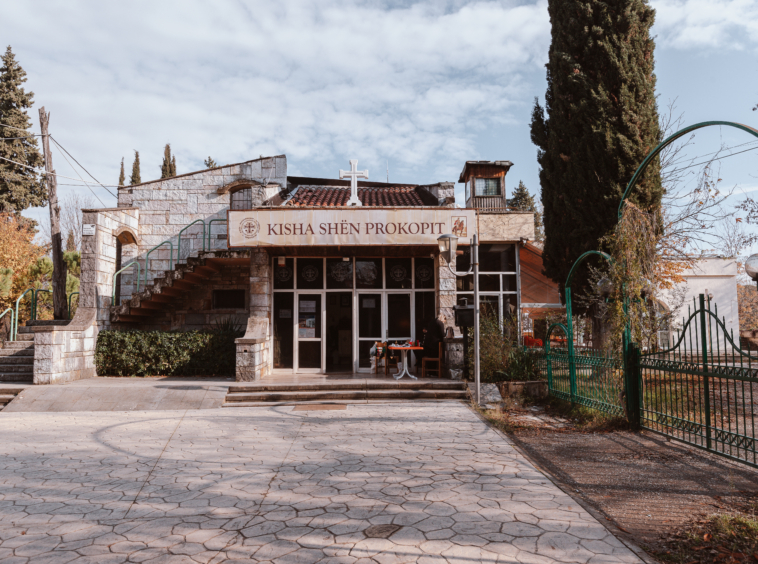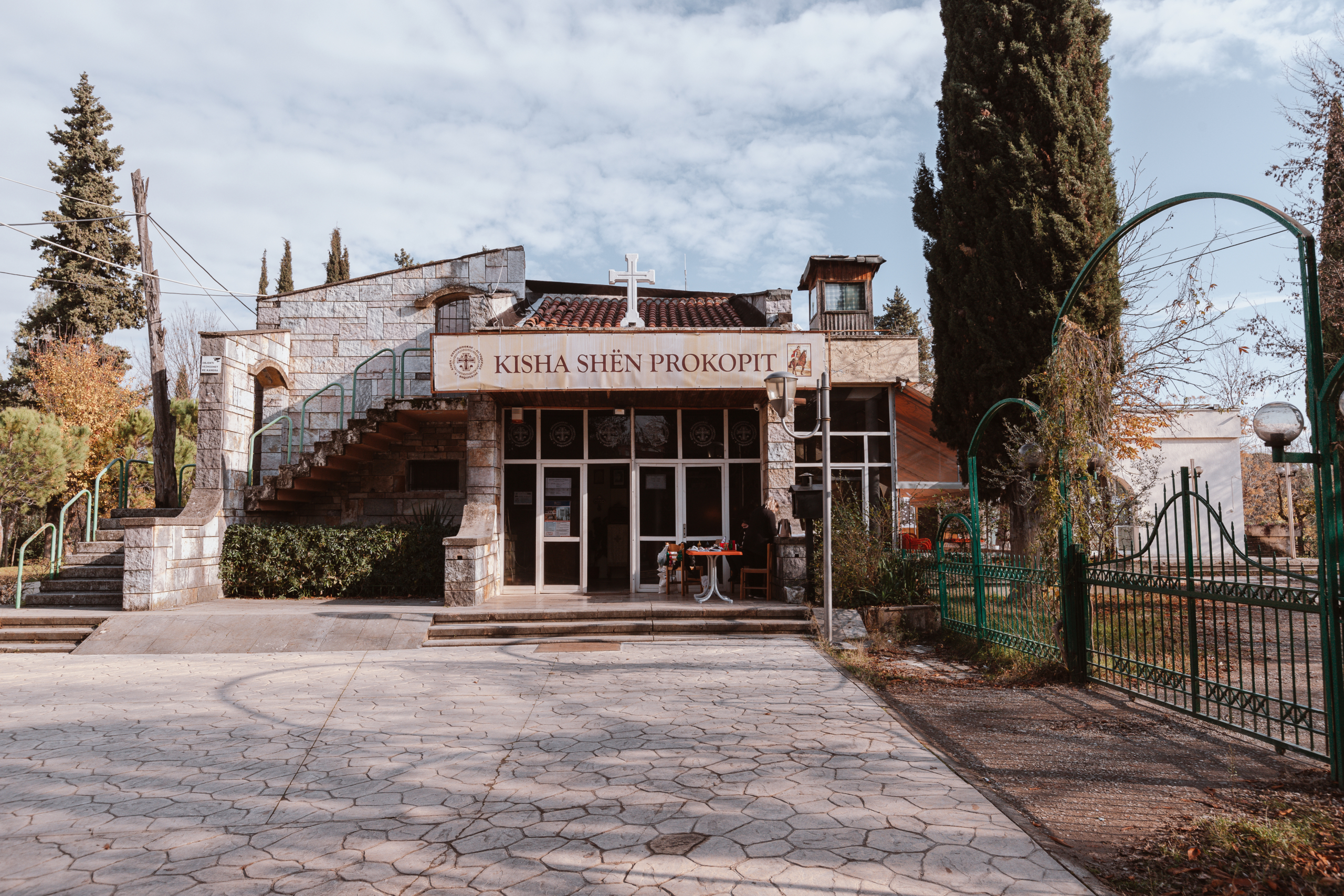Church of Saint Procopius
Details
Updated on December 30, 2024 at 1:56 pmInformation
- Author: Skënder Kristo Luarasi
- Year Built: 1937–1940 (original church in 1778)
Description
The Church of Saint Procopius, located at Lake Hill in Tirana, is a significant example of post-Byzantine ecclesiastical architecture in Albania. Built between 1937 and 1940, the current church is a redesign of the original structure, which was constructed in 1778 on land where the Presidential building now stands. This historical site represents a blend of architectural tradition and modern innovation, reflecting the enduring faith and contributions of Tirana’s Orthodox Christian community.
Architectural Design
The project, designed by architect Skënder Luarasi, retained the canonical scheme typical of post-Byzantine churches in the Southwestern Balkans while introducing modern materials and techniques.
- Plan and Composition:
The church follows the cross-in-square plan, a traditional design with a central dome symbolizing the heavens. The addition of a north-wing porch, covered with triangular forms aligned with the columns, highlights Luarasi’s attention to detail and integration of classical elements. - Main Façade:
The western façade clearly expresses the three-nave interior through the use of pilasters that rise vertically into arches. This architectural approach emphasizes the church’s structural clarity and symmetry. - Materials:
The construction employed reinforced concrete, a modern material that was a novelty in Albania at the time. This choice demonstrated the integration of contemporary engineering with traditional architectural forms.
Historical Transformations
- Original Church (1778):
The original Church of Saint Procopius was built with contributions from Tirana’s Orthodox believers and served as a spiritual center for over a century.
- Relocation and Reconstruction (1937–1940):
The decision to relocate and rebuild the church on Lake Hill reflected the need for modernization and urban development while preserving its religious and cultural significance.
- Communist Era Conversion (1967):
During Albania’s communist period, religious practices were banned, and the church was converted into a club named Lake. This repurposing was part of a broader effort to suppress religious institutions in the country.
- Post-1990 Restoration Efforts:
Following the fall of communism, the church property was returned to the Orthodox community. While it awaits full restoration to its original design, the building remains a symbol of resilience and hope.
Cultural and Spiritual Significance
The Church of Saint Procopius holds immense cultural and spiritual value, representing the historical perseverance of Albania’s Orthodox Christian community. Its architectural design bridges tradition and modernity, showcasing both regional influences and innovative construction techniques.
Legacy
As a cultural monument and a house of worship, the Church of Saint Procopius embodies Albania’s complex history of faith, suppression, and renewal. Its ongoing restoration efforts highlight the country’s commitment to preserving its religious and architectural heritage for future generations.
Address
Open on Google Maps- City Tirana








